5 Parse.ly Alternatives to Try for Your SaaS Company
SaaS companies implement different marketing strategies through a wide variety of channels. But there is one thing everyone agrees on:
Content marketing is essential for SaaS companies.
According to a study by Business 2 Community, 98% of the most successful SaaS companies have a blog. In addition, statistics show that high-quality content marketing gives SaaS companies an ROI of 448% or more.
The term “high quality” is critical here because content strategies that are not determined adequately for the right target audience do more harm than good to SaaS companies.
So how can you determine your content marketing strategies to move your company forward? With help from content marketing analytics, of course!
In this article, you can learn about Parse.ly, an analytics suite designed for this purpose, and Parse.ly alternatives you might want to try.
What is Parse.ly?
Parse.ly is an analytics platform designed for the needs of content creators, marketers, and developers. It has features to help you understand your content performance, identify your content values, and generate meaningful insights.
Some key features of Parse.ly include:
Content conversion engine
The most prominent feature of Parse.ly is its conversion analytics customized for content marketing. With this feature, you can determine how effective your content is with various KPIs. With this feature, it allows you to harmonize your content with your audience and create insights to create new content that will bring higher quality traffic.
Parse.ly pricing
Parse.ly has three different pricing options that cater to different needs. However, unfortunately, there is no pricing information available on the website. For more detailed pricing information, you can contact Parse.ly. Also, if you want, you can take advantage of its extensive demos to see if this platform suits you.
Why do SaaS companies look for alternatives to Parse.ly?
Content is only a part of the funnel for SaaS companies. That’s why tracking only your content marketing efforts isn’t enough to gather the right insights. You must consider your marketing process as a whole and use holistic data to optimize your marketing strategies and optimize your sales funnel.
In such a case, using a platform that focuses only on content conversion data can make integrating with your other data challenging.
Also, unfortunately, Parse.ly doesn’t allow you to track past data and compare it to what your data currently looks like. This means that if you’re only using Parse.ly, it will be quite challenging to compare your current situation with your situation, let’s say, a year ago.
It is precisely for these reasons that SaaS companies are looking into Parse.ly alternatives.
What are some alternatives to Parse.ly?
You needed a tool for content analysis and optimization, and you found out about Parse.ly. Maybe you signed up for a demo or used this platform for a while. Then, you decide that it is an effective platform, but unfortunately, it does not meet your needs. You’ve been looking for a new tool; you’re confused and don’t know where to start.
Don’t panic! Here are a few alternatives for you to check out.
#1 Chartbeat
Chartbeat is a content analytics tool that allows you to monitor readers’ interactions with your content and optimize your content accordingly. This tool allows you to monitor and analyze your data in real-time.
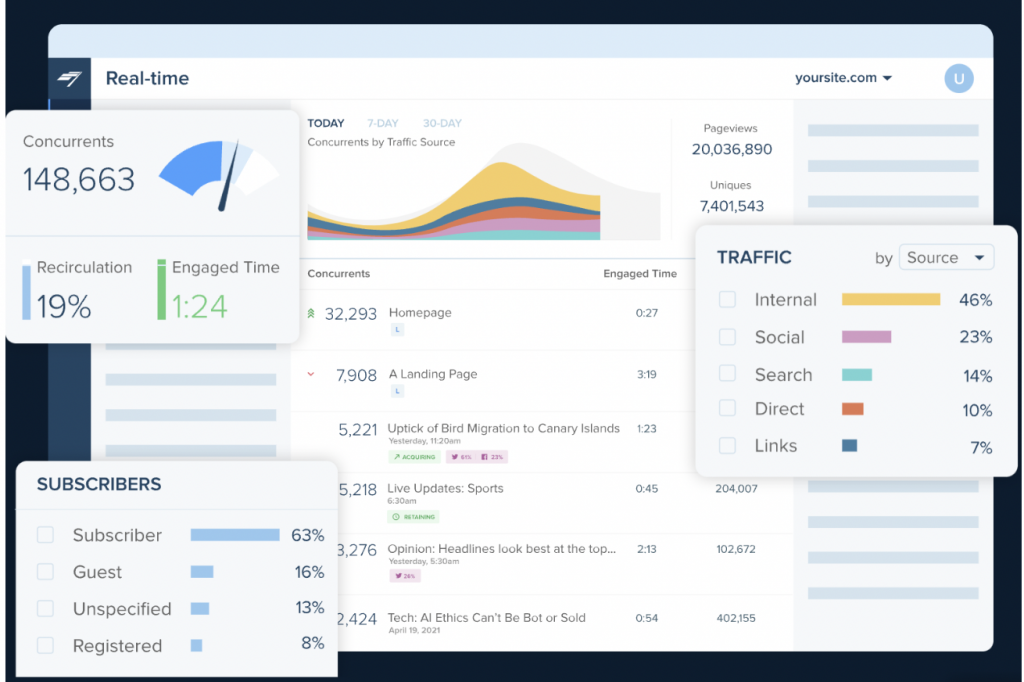
Chartbeat’s primary target audience is digital media and publishing businesses, and it’s a web-based solution that will help you with everything from improving content performance to improving audience engagement in real-time.
Some of the most prominent features of Chartbeat are:
Detailed content optimization
Chartbeat allows you to instantly monitor which article on your website performs the best, which ones need to be optimized, and the changes these blogs create in your website traffic. Also, with Chartbeat, you can compare the click-through rate to the post-click engagement for each link on a page. You simplify your content creation and curation process with the automated insights it generates for you.
Chartbeat not only lets you improve the subject or tone of the content but also lets you choose the right image for your content. It helps you test homepage images and quickly spot what catches readers’ attention.
Consulting
If you’re just starting content creation and need an expert’s opinion on what to do, Chartbeat’s consulting service may come in handy.
Chartbeat analyzes and maps best practices in your data, trends in the media ecosystem, and more for you. Experienced research and training teams in this field can provide you with consultancy services that will improve your content production process and provide you with the information you need.
Chartbeat’s pros
Chartbeat is very easy to integrate with your website. In a short time, you can complete the integration process without any challenges.
Chartbeat’s cons
Chartbeat gives you the ability to review real-time data, which is excellent. However, this tool does not allow you to analyze your historical data. Therefore, comparing your current situation to, say, six months ago would be a challenging process with Chartbeat.
Another disadvantage of this platform, according to Chartbeat users, is that data changes too frequently on the platform, making it difficult to perform analysis.
Chartbeat’s pricing
Unfortunately, there is no information about their pricing on Chartbeat’s website. You need to contact them for pricing information.
#2 Google Analytics
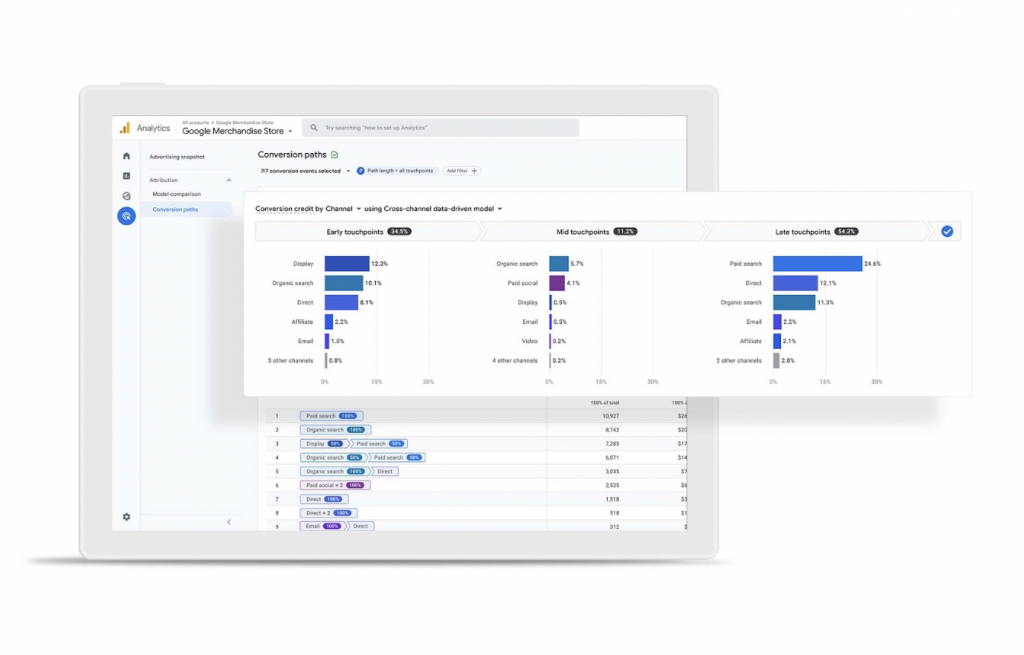
Google Analytics is an analytics platform that helps you measure your site and application performance. If I need to put it in one sentence, this platform gives you a broad perspective of how your website performs. It collects and processes data from various channels. Thus, it provides you with the insights you need and allows you to take action based on them.
Let’s take a look at the most prominent features of Google Analytics.
Data collection
Google Analytics allows you to collect data about your website from different channels. This way, you can answer many questions that will help you move your website and content forward. Here are some questions you can find answers to with Google Analytics:
- How many visitors viewed your page?
- Through which channels did these visitors come to your page?
- What elements of your page or content did it engage with?
- How long did your visitors spend on your page?
and more.
Report generation
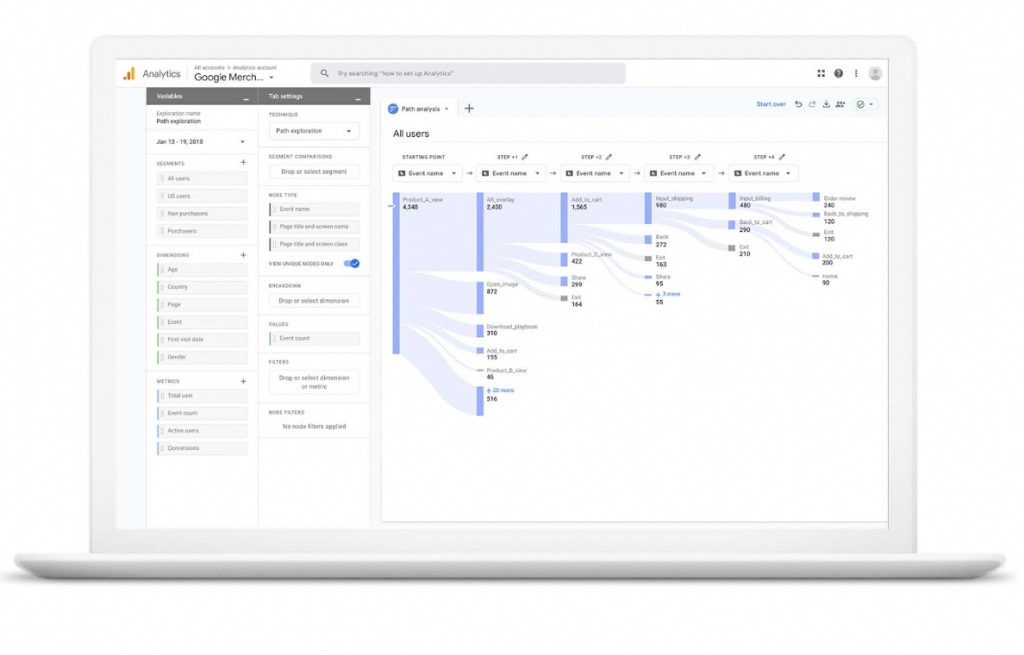
Google Analytics visualizes all the data it collects by presenting it to you in reports and funnels. Analyzing data in this way makes it easy for you to understand it and extract insights.
Google Analytics’ pros
The best thing about Google Analytics is that it’s completely free. Unless you upgrade to Google Analytics 360- which is extremely expensive compared to its alternatives- you can access all its features at no cost. In addition, the data is real-time and reliable.
Google Analytics’ cons
The most significant disadvantage of Google Analytics is the lack of a good user experience. Although it seems to be a suitable platform for most analysts due to its popularity, it actually has a complicated interface. Also, when you’re stuck with something and need to contact support, you’ll realize that you have no choice but to resort to support forums. Therefore, unless you are pretty experienced, it is quite possible that you will have difficulty using Google Analytics.
Google Analytics’ Pricing
As I mentioned before, Google Analytics is free but has limited features. If you want to access more detailed features, you can try Google Analytics 360. You can get the pricing information of Google Analytics 360 by contacting the sales team.
#3 Heap
Heap is a digital insight platform to help you understand the channels through which your users engage with your product and why. It automatically collects your user data from your website or app and guides you with actionable insights that will help your company grow the most.
Highlights of Heap are as follows.
Segmentation
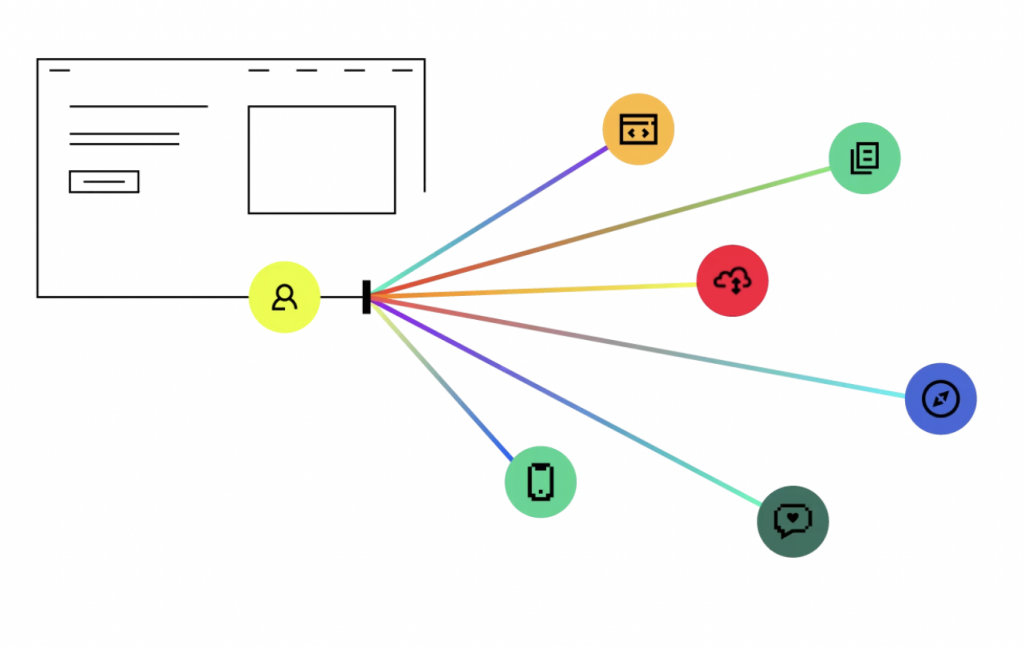
Heap helps you segment your users based on their behavior. This way, you can identify how different users navigate your digital experience, what content they consume, and how they personalize communications. Accordingly, you can produce content suitable for different users and reach more people.
Data governance
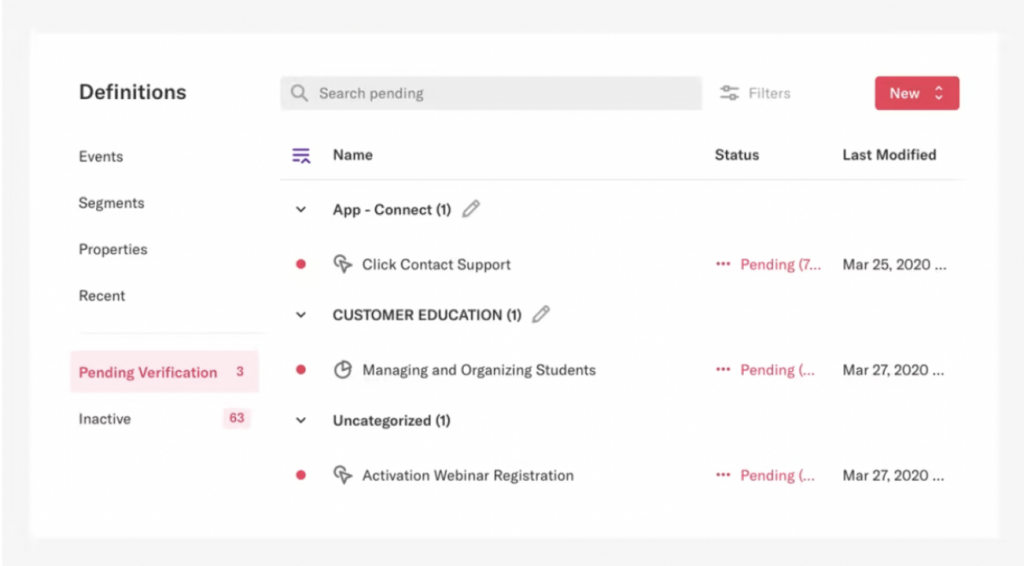
When you need to work with large datasets, Heap makes it easy to manage and generate insights based on those datasets. Like many other tools, it allows access to real-time data at all times, even when your website or product is under development, with the real-time data flow.
Heap’s pros
The biggest plus point of Heap is that it supports retroactive tracking, allowing you to get a full picture of your interactions.
Heap’s cons
Although each user’s experience, likes and dislikes are different, Heap’s users unanimously agree that the tool is challenging to use and maintain.
Heap promises you many features that can be useful to you. However, according to many users, if you don’t have deep technical knowledge or experience, Heap may be too confusing for you to use.
Heap’s pricing
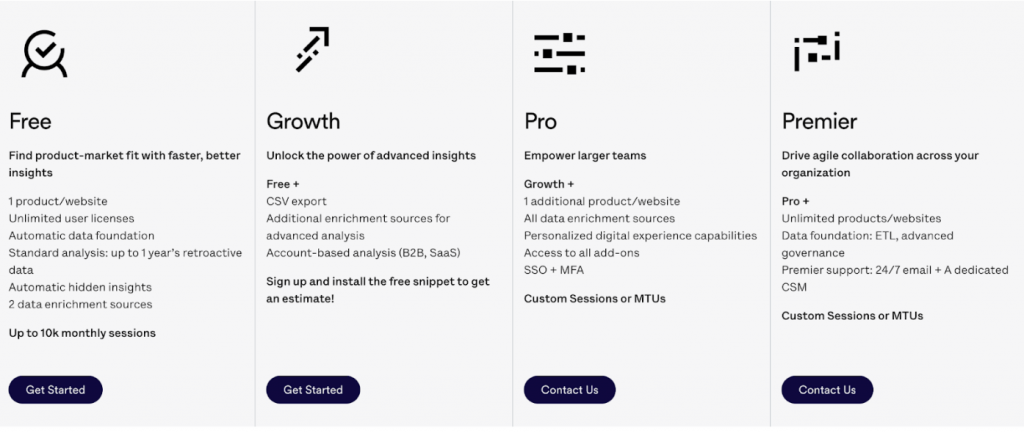
Heap has four different pricing plans, one of which is free. The pricing plans are called Free, Growth, Pro and Premier. However, unfortunately, there is no detailed information about their prices on the website.
#4 Kissmetrics
Kissmetrics is a marketing and product analytics tool for SaaS and e-commerce companies. It lets you see which product or content converts the most, thereby improving your conversion process.
Customer activity reports
Thanks to the customer activity reports you can create with Kissmetrics, you can track which content attracts the most attention from customers and which pages users visit the most on a daily, weekly and monthly basis. This way, you will be informed about what content you need to improve and what type of content most appeals to your target audience.
Kissmetrics’ customer activity reports also allow you to compare your website visit rates over time. In this way, you can see how effective your improvements are.
Kissmetrics’ pros
The most impressive feature of Kissmetrics is its customer support. If you get stuck, customer support helps you quickly and politely.
Kissmetrics’ cons
The most significant disadvantage of Kissmetrics is that its dashboards are inadequate for its users. Compared to other alternatives, Kissmetrics’ dashboards (especially filtering options) sometimes may not fully meet your needs.
Kissmetrics pricing
Kissmetrics has three different pricing options: Silver, Gold and Platinum. You can see more detailed information about these options below.
What if these alternatives do not meet your needs?
All these tools, including Parse.ly, have many features that make them stand out. However, each one of these tools also have their own disadvantages in terms of the difficulty of use and inadequacy. For this reason, you may have thought that none of these alternatives fully meets your needs.
But don’t worry! I saved the best for last.
Try HockeyStack
HockeyStack is a no-code end-to-end analytics tool for SaaS companies. With HockeyStack, you can guide your content marketing strategies by answering cross-sectional questions that you can’t answer with any other tool on the market. For example:
- How many users did each blog series bring us?
- How much time do users spend on which page?
- Which types of blogs generated more revenue?
and more.
HockeyStack combines your marketing and content data with your sales and product data. In this way, you can leverage versatile insights during content optimizations.
Some of the most prominent features of HockeyStack are:
Easy-to-use dashboards

HockeyStack’s comprehensive and easy-to-understand dashboards let you easily monitor every metric you need for your content marketing strategies. For this, you can collect all the metrics you need and think will offer more value when you measure them together in your customized reports. Or you can use the templates that HockeyStack has created for you. The decision is yours!
Attribution analysis
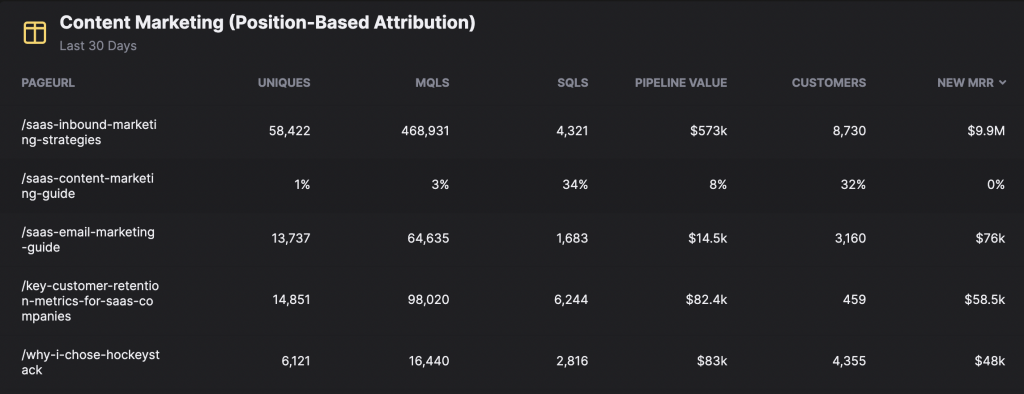
Hockeystack helps you improve your content marketing strategies not only as an analytics tool but also as an attribution tool.
So how does it do that?
HockeyStack automatically collects each user’s touchpoints before conversion and all their actions on those touchpoints. It visualizes each channel in your user personas’ conversion journey for you.
And it doesn’t just do this by visualizing impressions and clicks. It also helps you identify the types of content that bring you the most active users. In this way, you can see which channels need improvement and take action accordingly.
Integrations
HockeyStack offers you the opportunity to integrate with various marketing tools such as Hubspot and Mailchimp etc. In this way, you can collect marketing data from other tools and create a single dashboard for all your marketing needs.
HockeyStack Pricing
HockeyStack has two pricing plans, both of which have a 14-day trial with a 30-day refund guarantee.
You can check out the pricing page here.
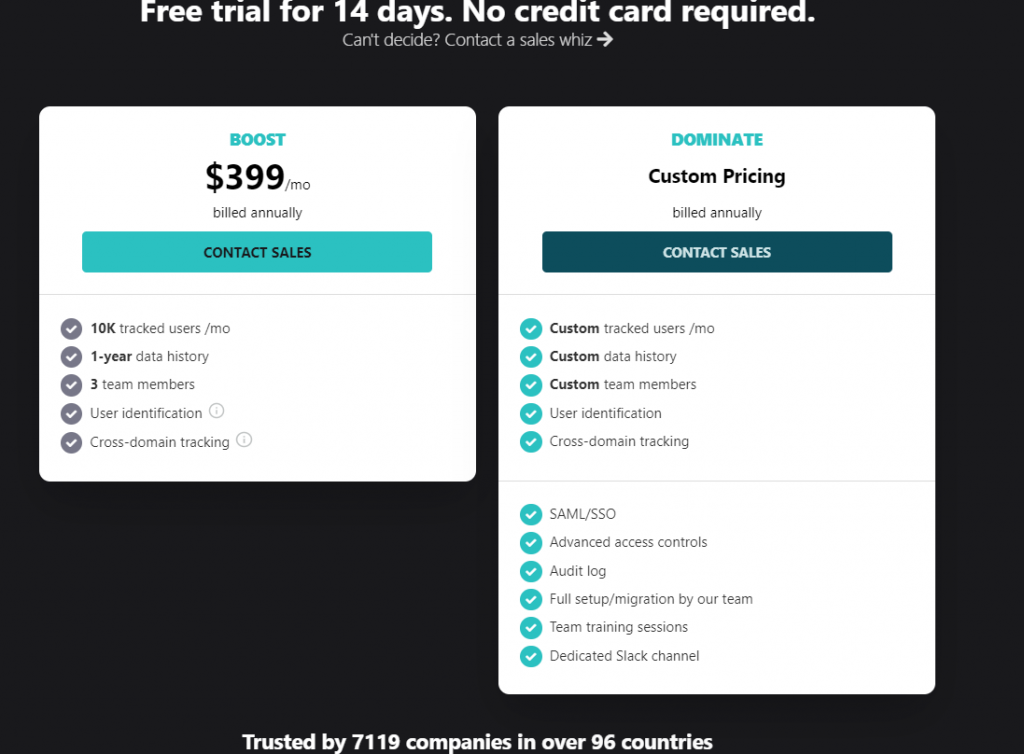
Key Takeaways
You can use countless tools to help improve your content marketing campaigns. In this article, I gave you information about five of the most prominent of these tools. With the right platform for your needs, you can eliminate the guesswork from your content strategies and start making informed decisions.
FAQ
Parse.ly is best for digital publishers and media companies.
No, unfortunately, Parse.ly isn’t free. However, you can always request a demo to see if this tool meets your needs.



